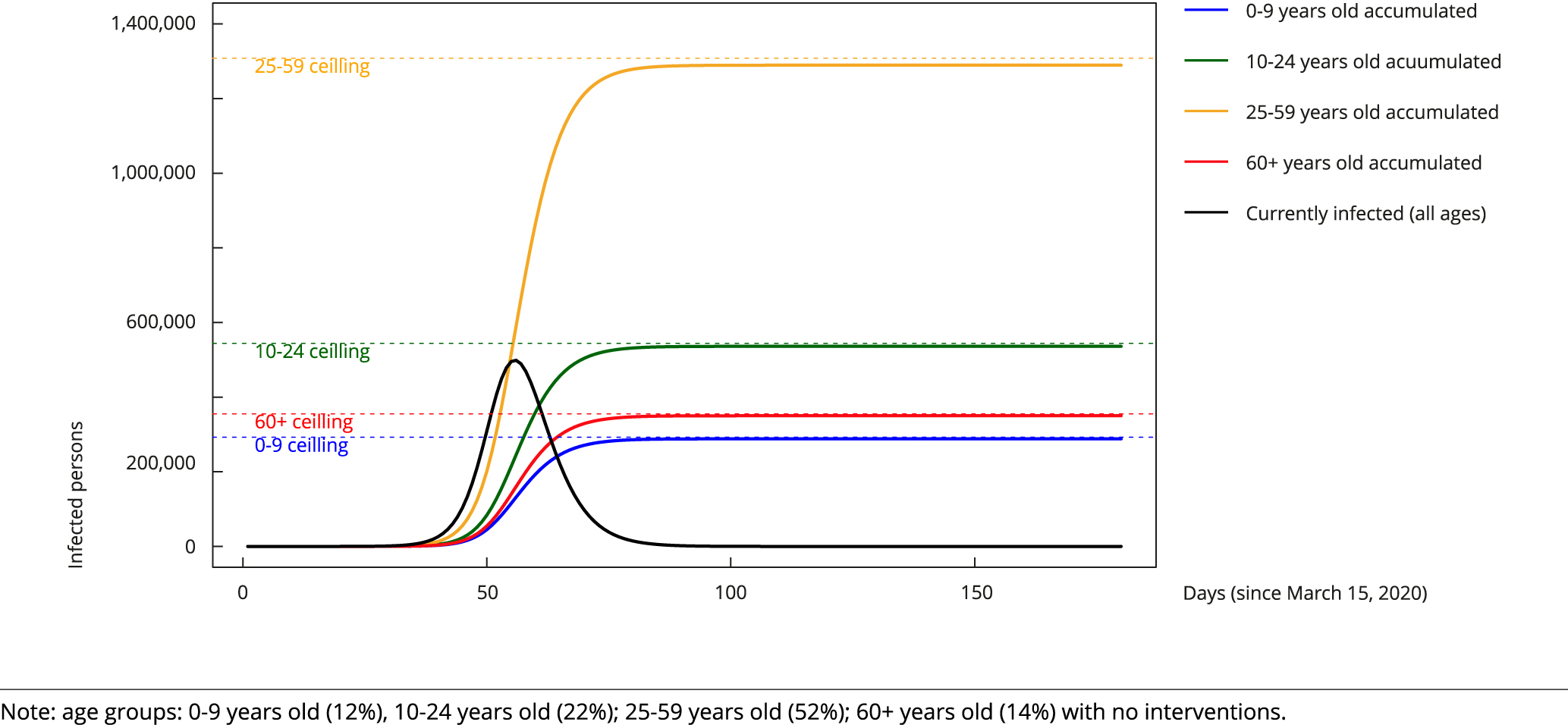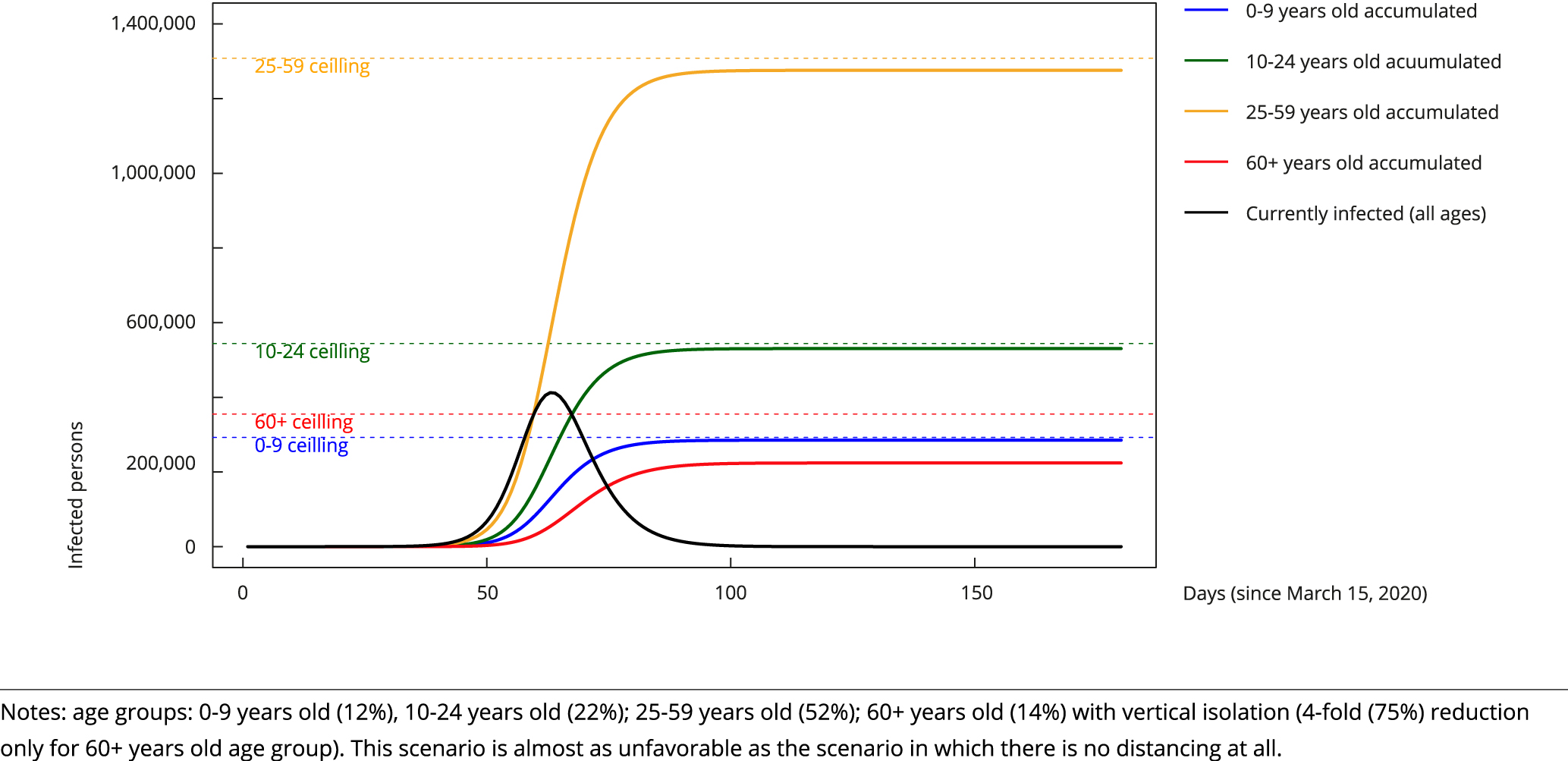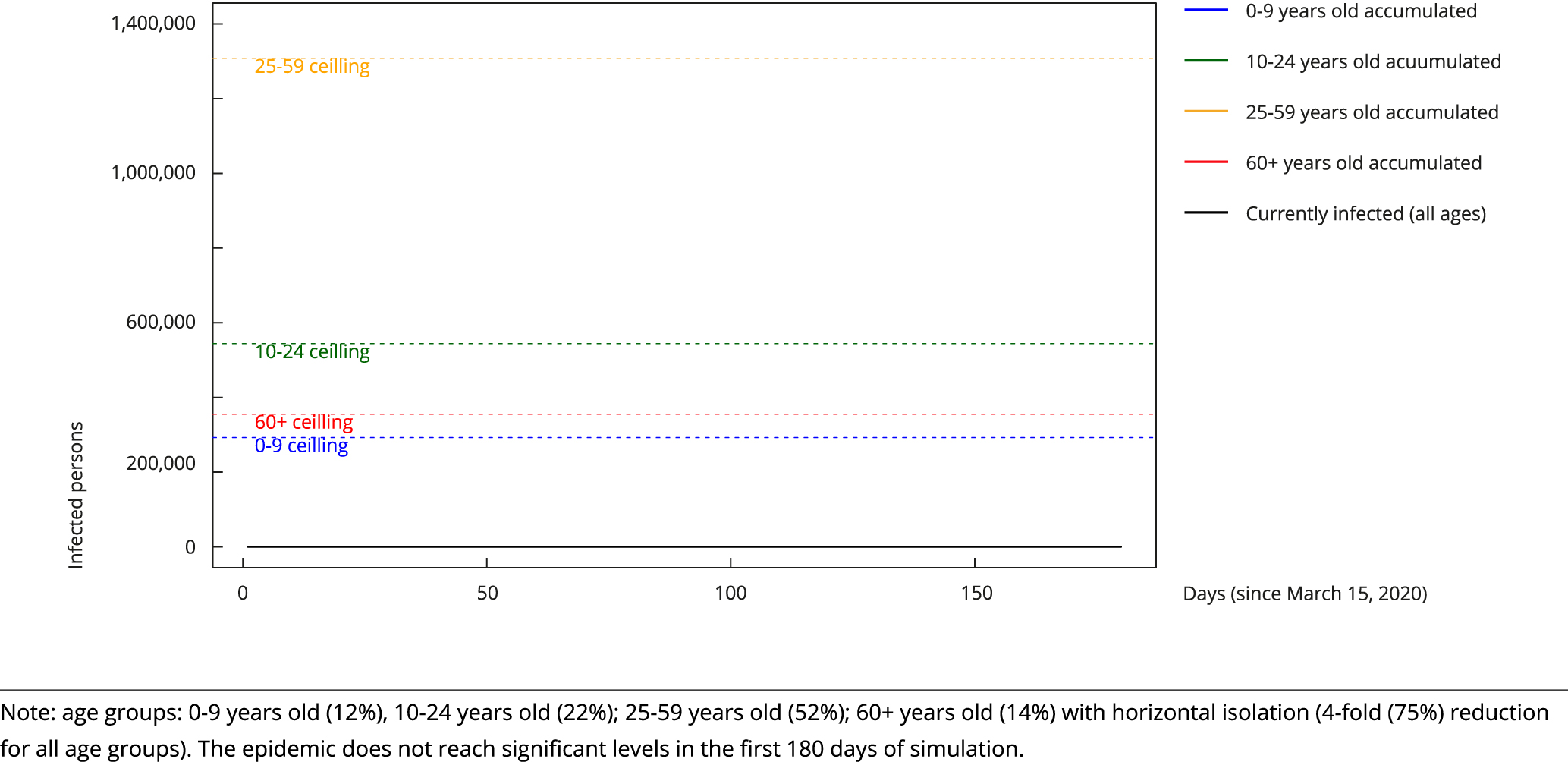Abstract:
Considering numerical simulations, this study shows that the so-called vertical social distancing health policy is ineffective to contain the COVID-19 pandemic. We present the SEIR-Net model, for a network of social group interactions, as a development of the classic mathematical model of SEIR epidemics (Susceptible-Exposed-Infected (symptomatic and asymptomatic)-Removed). In the SEIR-Net model, we can simulate social contacts between groups divided by age groups and analyze different strategies of social distancing. In the vertical distancing policy, only older people are distanced, whereas in the horizontal distancing policy all age groups adhere to social distancing. These two scenarios are compared to a control scenario in which no intervention is made to distance people. The vertical distancing scenario is almost as bad as the control, both in terms of people infected and in the acceleration of cases. On the other hand, horizontal distancing, if applied with the same intensity in all age groups, significantly reduces the total infected people “flattening the disease growth curve”. Our analysis considers the city of Belo Horizonte, Minas Gerais State, Brazil, but similar conclusions apply to other cities as well. Code implementation of the model in R-language is provided in the supplementary material.
Keywords:
COVID-19; Social Distance; Epidemiologic Models

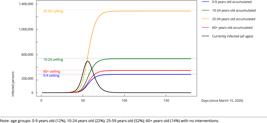 Thumbnail
Thumbnail
 Thumbnail
Thumbnail
 Thumbnail
Thumbnail
 Thumbnail
Thumbnail
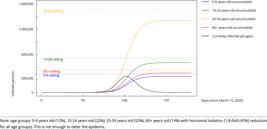 Thumbnail
Thumbnail
